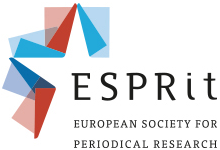Séminaire Pélias: Les périodiques comme médiateurs culturels
Mercredi 7 février, Bibliothèque Jacques Seebacher, Université Paris Cité, Campus des Grands Moulins, 5 rue Thomas Mann, 75013 Paris, bâtiment A, 2e étage, 16h-19h
Nathalie Simonnot (chercheur du ministère de la Culture, directrice du laboratoire de recherche de l’École nationale supérieure d’architecture de Versailles) : « Les revues muséales : un objet de recherche polymorphe »/ « Museum magazines: a polymorphous object of research »
Les revues muséales forment un domaine de recherche encore lacunaire dû à leur typologie hybride, à la confluence entre revue d’art, revue de technique et revue d’actualité professionnelle. Destinées aux conservateurs des musées, elles rendent compte de l’état des collections, des acquisitions et des aménagements réalisés. À vocation à la fois théorique, pratique et didactique, elles sont un support majeur pour assurer la diffusion de l’actualité muséale. Cette conférence sera centrée sur les revues muséales françaises au lendemain de la Seconde Guerre mondiale, au moment où les contenus et les formats de ces revues ont évolué pour accompagner le renouveau des musées pendant la Reconstruction. En expérimentant plusieurs formules éditoriales dans un laps de temps parfois très court, ces revues sont passées pour certaines d’un simple bulletin de quelques pages à de véritables revues professionnelles. Cette étude permet de contribuer à une histoire des acteurs, des réseaux professionnels, des expériences muséographiques et de leurs modes de diffusion dans la presse spécialisée. En fournissant quantité d’images d’intérieurs aujourd’hui disparus, ces revues retracent une certaine idée du musée et de ses missions. Petits et grands musées s’y côtoient, quel que soit leur statut, dans un élan général faisant des innombrables contributions des conservateurs qui y publient – plusieurs centaines d’articles et de documents graphiques – un corpus hors du commun pour comprendre l’esprit d’une époque.
Museum magazines form a field of research that is still incomplete, due to their hybrid typology, at the confluence of art magazines, technical magazines and professional news magazines. Intended for museum curators, they report on the state of collections, acquisitions and new developments. Theoretical, practical and didactic, they are a major medium for disseminating museum news. This conference will focus on French museum magazines in the aftermath of the Second World War, at a time when the content and formats of these magazines evolved to accompany the renewal of museums during Reconstruction. By experimenting with different editorial formulas in what was sometimes a very short space of time, some of these magazines evolved from a simple bulletin of a few pages to fully-fledged professional journals. This study contributes to a history of the players, professional networks, museographic experiences and their modes of dissemination in the specialized press. By providing a wealth of images of interiors that have now disappeared, these magazines trace a certain idea of the museum and its missions. Small and large museums, whatever their status, rub shoulders in a general momentum that makes the countless contributions of the curators who publish in them - several hundred articles and graphic documents - an outstanding corpus for understanding the spirit of an era.
Paul Edwards (Université Paris Cité, LARCA) : « Revues photographiques et sociétés photographiques autour de 1900 : la photolittérature, le spectacle et la socialisation »/ « Photographic magazines and photographic societies around 1900: photoliterature, spectacle and socialization »
This paper explains how French photoliterature could appear in the 1890s not only as a crafted, bibliophilic object involving multiple participants but also as an activity of cultural distinction within the socialising practices of provincial photographic societies, in close relation to the ritual of lantern-slide story-telling, at a time immediately preceding the birth of cinema (1895) when there was already an interest in the narrative power of serial photography and what might be called the “kinetic” effect of juxtaposed images on the page. This paper also shows how literary illustrations could double as architectural views that provided documentary evidence of a cultural heritage that was perceived as fragile and in need of preservation, since the members of photo clubs were leisured amateurs who participated actively in different cultural and patrimonial associations. Drawing on local photography club journals, national photography magazines, and recently discovered correspondence, this paper aims to show how photoliterature was collectively produced within a context of bourgeois sociability in a quest for cultural distinction and social recognition at a time when photography was popularly associated with commerce, industry and science, not with fine art and culture; it will show how it forms a continuum with photo-club activities, and that the historical interest of these productions today lies not only in their witty reinterpretations of popular literature, but in what they reveal about photography’s social function.
La séance sera accessible également en ligne. Les demandes d’inscription pour la séance en ligne sont à adresser à This email address is being protected from spambots. You need JavaScript enabled to view it. et This email address is being protected from spambots. You need JavaScript enabled to view it..
The session will also be available online. Requests to register for the online session should be sent to This email address is being protected from spambots. You need JavaScript enabled to view it. and This email address is being protected from spambots. You need JavaScript enabled to view it.
Organisateurs/organizers :
Hélène Védrine (Sorbonne Université, CELLF 19-21)
Norbert Verdier (Paris-Saclay, EST-GHDSO)
Alexia Kalantzis (UVSQ, CHCSC & Université Paris Cité, CERILAC)
Comité scientifique/scientific committee :
Jean-Charles Geslot (UVSQ, CHCSC)
Axel Hohnsbein (Université de Bordeaux, SPH)
Alexia Kalantzis (UVSQ, CHCSC & Université Paris Cité, CERILAC)
Catherine Radtka (CNAM PARIS, HT2S)
Viera Rebolledo-Dhuin (UPEC, CRHEC)
Evanghelia Stead (UVSQ, CHCSC)
Hélène Védrine (Paris-Sorbonne, CELLF 19-21)
Norbert Verdier (GHDSO/EST)
Contacts :
This email address is being protected from spambots. You need JavaScript enabled to view it.
This email address is being protected from spambots. You need JavaScript enabled to view it.
Label MSH Paris-Saclay & CELLF 19-21
